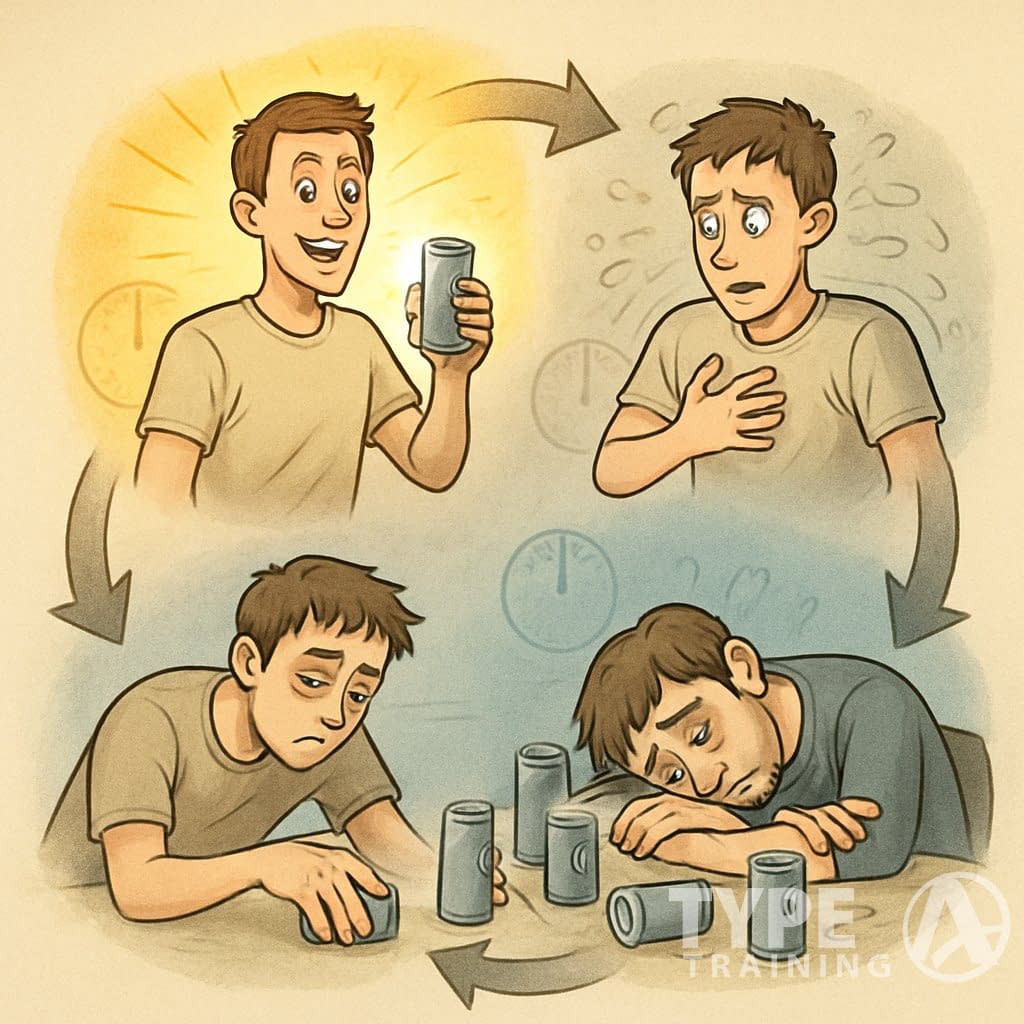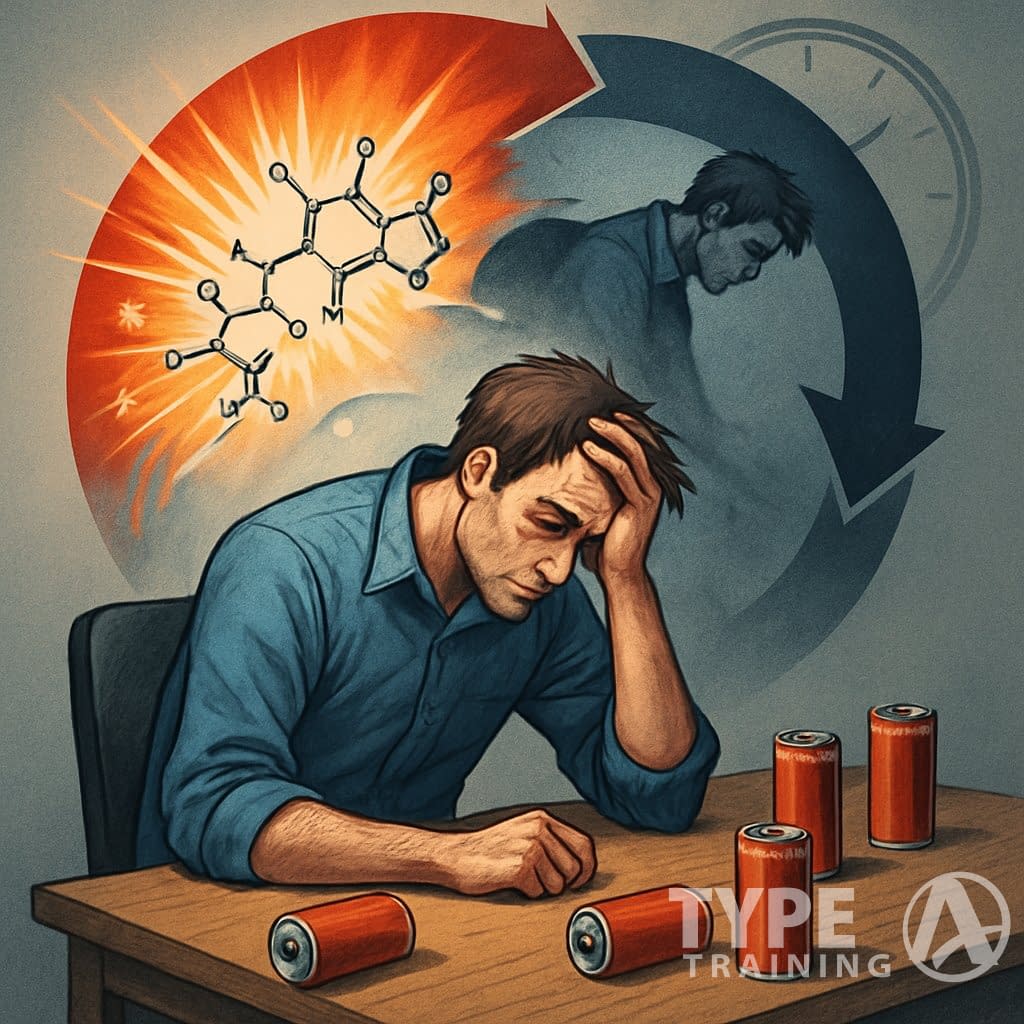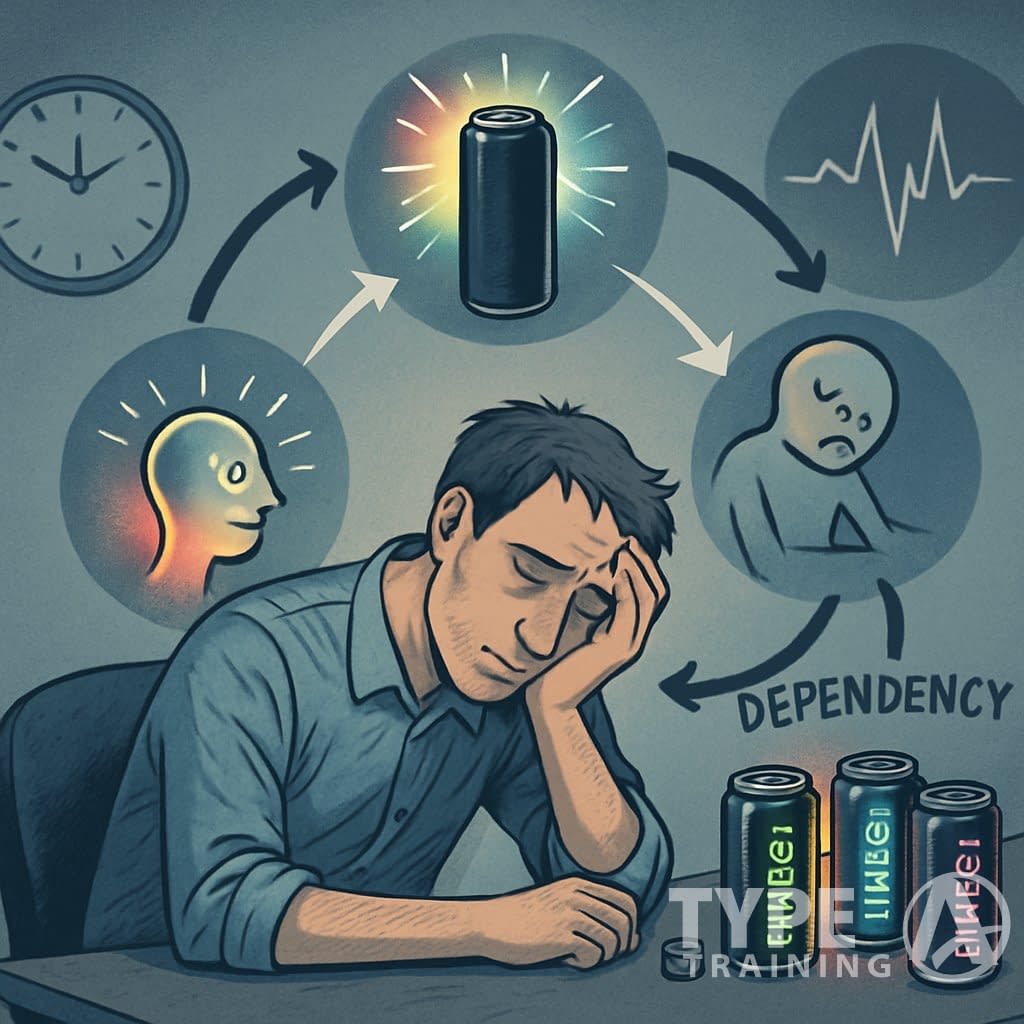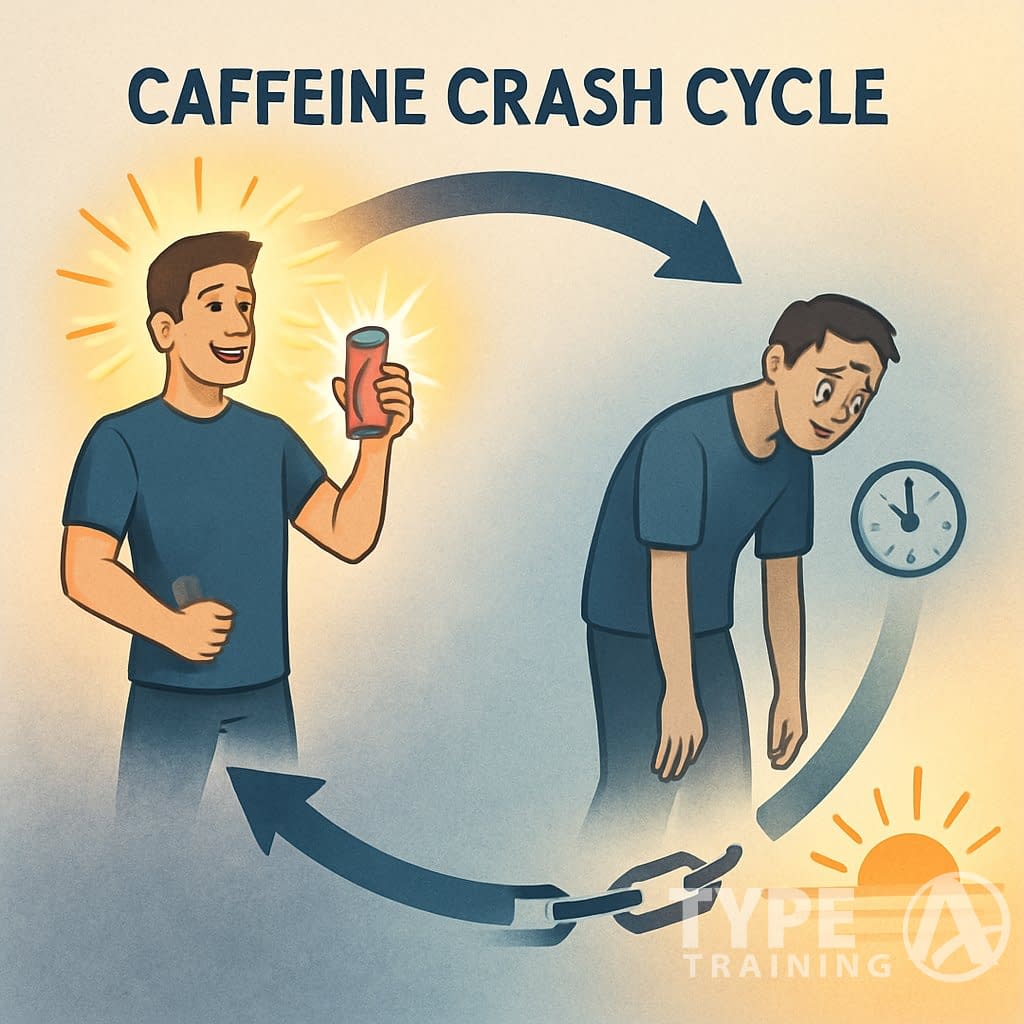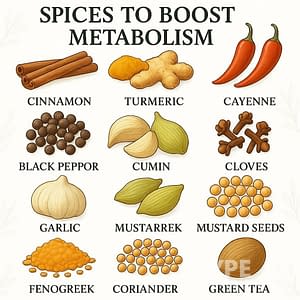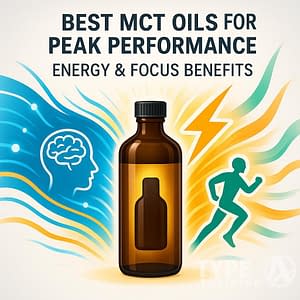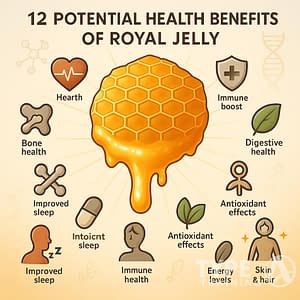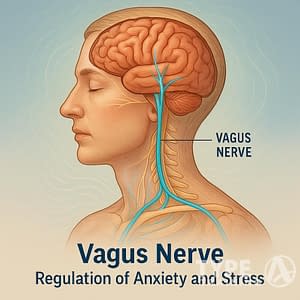Ever grabbed an energy drink hoping for a quick boost, only to feel even more wiped out later? Yeah, you’re definitely not the only one. Energy drinks promise to wake us up, but sometimes they just leave us dragging. They create this weird cycle of dependency and fatigue because of all the caffeine and sugar—first, you’re up, then you crash hard when it all wears off.
The Caffeine Crash Cycle can start with just one energy drink, but understanding it is crucial for managing your energy levels effectively.
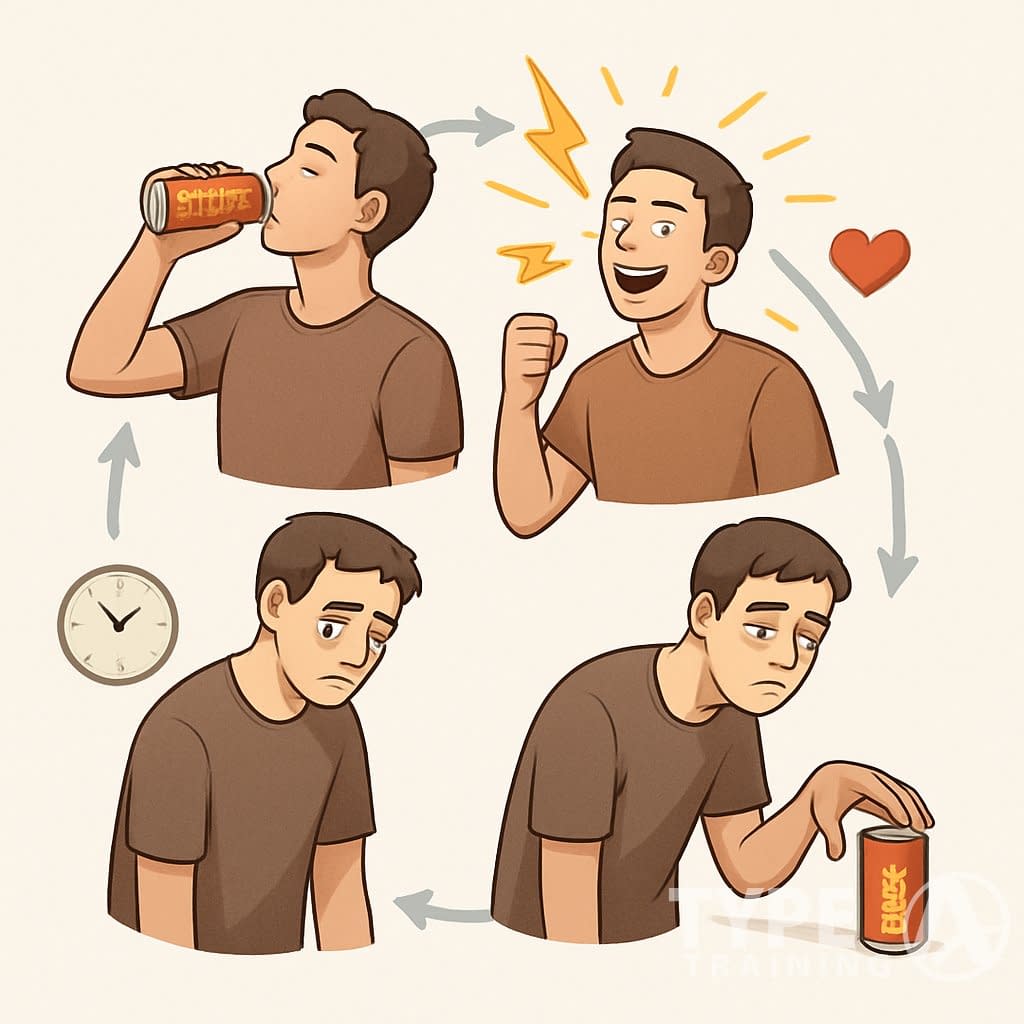
The caffeine crash hits when the buzz fades. Suddenly, you’re more tired than before you started. Energy drinks usually pack more caffeine than coffee plus loads of sugar, so your body gets this fast energy surge, but it drops off a cliff when the effects vanish.
Popular posts:
This is where the Caffeine Crash Cycle really kicks in, making it hard to break free from the cycle of fatigue.
If you drink these regularly, your body starts building up tolerance. You end up needing more just to feel “normal,” and when you try to cut back, withdrawal symptoms kick in. The constant rollercoaster messes with your body’s natural energy, and somehow, you’re always tired and reaching for another can.
Your body is caught in the Caffeine Crash Cycle, leading to a constant need for more caffeine.
Key Takeaways
- Energy drinks can leave you more tired because of a crash when caffeine and sugar drop in your bloodstream.
- Drinking them often sets up a dependency cycle—you need more for the same effect.
- Breaking free means cutting back slowly, getting better sleep, staying hydrated, and finding healthier energy sources.
- Recognizing the Caffeine Crash Cycle can help you avoid these pitfalls.
Understanding the Caffeine Crash Cycle
In-depth knowledge of the Caffeine Crash Cycle can empower you to make healthier choices.
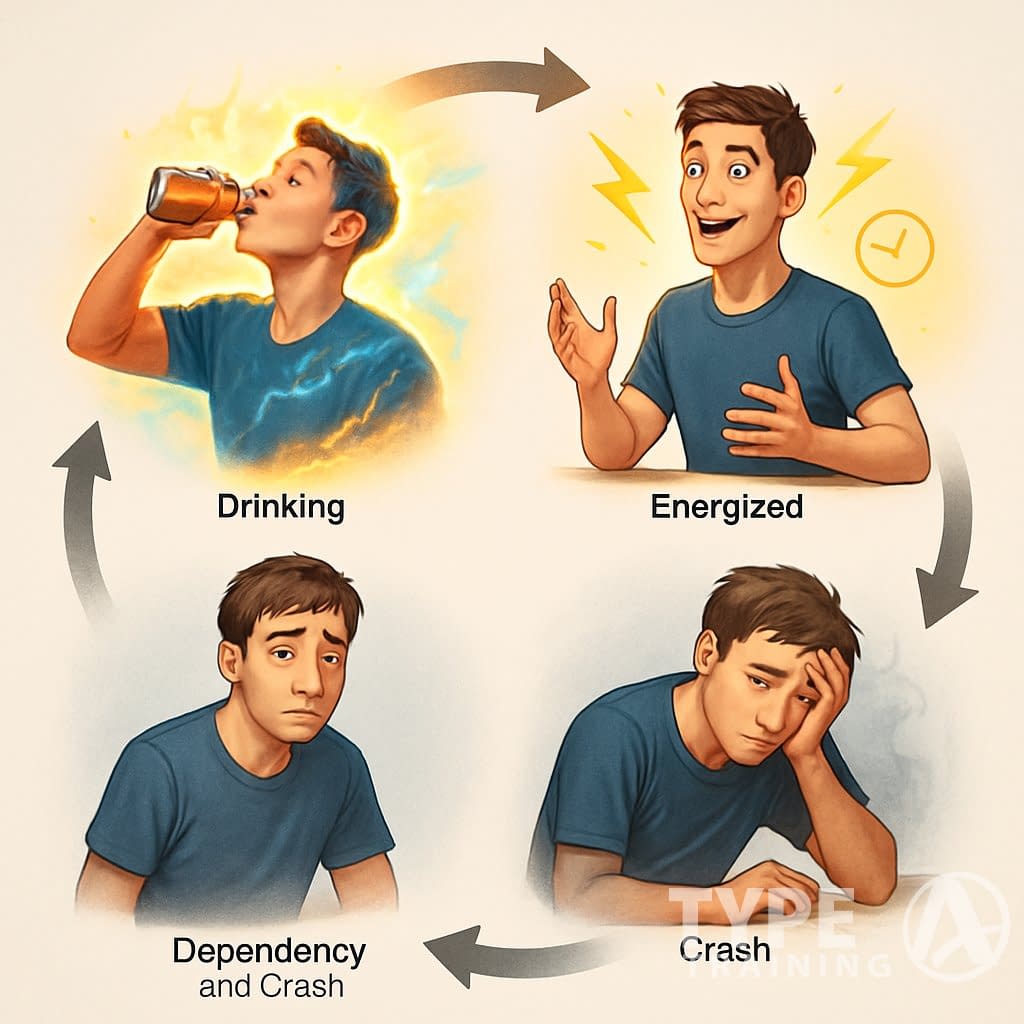
Caffeine messes with your brain chemistry and energy systems, which explains the all-too-familiar pattern: you’re up, then you’re down. It’s almost like your body’s playing a prank on you.
The Caffeine Crash Cycle is not just a physical phenomenon, but also a mental one.
What Is the Caffeine Crash?
Understanding the Caffeine Crash Cycle allows you to anticipate and manage your energy levels.
A caffeine crash is that sudden wave of tiredness after the buzz wears off. Caffeine blocks adenosine, the brain chemical that makes you sleepy, so you feel alert while it’s in your system.
But your body doesn’t stop making adenosine just because you had caffeine. When the caffeine fades, all that built-up adenosine floods in, and you get slammed with sleepiness.
This is why you can feel great for a couple of hours after your morning energy drink, then suddenly hit a wall. The rebound is real, and sometimes it’s worse than just being tired in the first place.
How Energy Drinks Amplify the Crash Response
This amplification of the Caffeine Crash Cycle leads to greater fatigue.
Energy drinks take the crash to a whole new level. Most have way more caffeine than coffee, plus a ton of sugar.
Here’s how it usually plays out:
This is part of the Caffeine Crash Cycle that you should be aware of.
- Sugar crash: You get a blood sugar spike, then a quick drop.
- Caffeine crash: That adenosine flood hits as the caffeine leaves your system.
Some drinks even throw in extra stimulants like guarana or taurine, which crank up the overstimulation. The result? A wild ride of fake energy followed by epic exhaustion.
Your body adapts by making more adenosine, so each crash gets worse. Before you know it, you’re stuck needing more caffeine just to feel halfway awake.
The longer you stay in the Caffeine Crash Cycle, the more severe the symptoms become.
Common Signs and Symptoms of a Crash
Spotting a caffeine crash isn’t too hard if you know what to look for. Here are some of the usual suspects:
Being mindful of the Caffeine Crash Cycle can lead to better energy management.
Physical symptoms:
- Sudden, heavy fatigue
- Headaches or tense muscles
- Shaky hands or jitters
- Racing heart
Mental symptoms:
The Caffeine Crash Cycle can manifest in various ways, affecting both body and mind.
- Can’t focus
- Irritability or mood swings
- Brain fog
- Anxiety or just feeling weirdly on edge
Usually, these symptoms pop up three to five hours after you drink your energy fix. That’s when caffeine peaks and then starts to drop. A lot of people also get cravings for sugar or more caffeine, which just keeps the cycle going.
Identifying the Caffeine Crash Cycle is key to breaking free from it.
It gets worse if you’re dehydrated, haven’t eaten, or already running on too little sleep.
How Energy Drinks Lead to Dependency
Understanding the Caffeine Crash Cycle can be the first step to recovery.
Energy drinks hook you in a few different ways. The mix of caffeine, sugar, and other stuff makes your brain and body crave them, both physically and mentally.
Your journey back from the Caffeine Crash Cycle starts with awareness.
Caffeine Tolerance and Escalation
If you drink energy drinks all the time, your body gets used to the caffeine fast. One can turns into two, then maybe three, just to feel that same alertness.
This happens because caffeine blocks adenosine receptors, and your brain responds by making more. As tolerance builds, you need more caffeine for the same buzz. It’s a lot like how other addictive things work—you keep needing more.
Each step away from the Caffeine Crash Cycle is a victory in itself.
If you try to quit or cut down, you might get withdrawal symptoms in a day or less. Headaches, crankiness, fuzzy thinking, and tiredness can hit hard, and it’s tempting to just grab another drink.
Most people don’t even realize how much they’re escalating until they’re way overboard on caffeine.
Addictive Ingredients Beyond Caffeine
Caffeine gets all the blame, but there’s more going on. The sugar in energy drinks spikes your blood sugar and then drops it fast, making you crave another hit.
Breaking the Caffeine Crash Cycle requires a multi-faceted approach.
Other ingredients, like taurine, guarana, and B-vitamins, boost the caffeine effect. The combo gives you a bigger rush than caffeine could on its own.
Even the taste can become a psychological trigger for craving energy. Your brain starts linking that flavor to the energy jolt. Honestly, marketing plays a sneaky role, too. Brands make it feel like drinking their product is part of your lifestyle.
The Neurochemical Impact of Regular Consumption
Over time, energy drinks change your brain chemistry. Caffeine makes your brain release dopamine, the “feel-good” chemical. It’s the same one activated by stuff like cocaine (just not as intensely, thankfully).
This dopamine boost makes you want more, setting up a reward loop in your brain. You start to connect energy drinks with pleasure and relief from feeling tired.
Caffeine also messes with sleep by blocking adenosine, which normally helps you wind down. That leads to:
- Worse sleep
- Messed-up body clock
- More daytime tiredness
The more tired you get, the more you reach for another energy drink. It’s a tough cycle to break, and the longer it goes on, the harder it gets.
Effects of Chronic Energy Drink Use on Fatigue
Drinking energy drinks regularly sets up a dependency and fatigue loop that can really mess with your body. The stimulants in these drinks throw off your natural energy balance over time.
Rebound Fatigue After Stimulation
When you down an energy drink, the caffeine blocks adenosine in your brain, so you don’t feel tired for a while. You’re basically tricking your body into being alert.
But when the caffeine effect fades, you crash—hard. Adenosine levels can actually rebound higher than normal, so you feel even more wiped out than before.
If you keep using energy drinks, your body adapts by making more adenosine receptors. You need more caffeine for the same pick-me-up, and the cycle just keeps spinning.
The spike-and-crash pattern makes you dependent, physically and mentally. You end up needing energy drinks just to get through the day, but the crashes get rougher.
Ultimately, overcoming the Caffeine Crash Cycle leads to a more balanced life.
Interrupted Sleep Patterns and Exhaustion
Energy drinks can seriously wreck your sleep, even if you stop drinking them hours before bed. The caffeine sticks around for 5-6 hours, so half of it is still in your system long after you think you’re safe.
This leftover caffeine makes it tough to fall asleep and cuts into your deep sleep. Even if you get enough hours, the quality just isn’t there.
Remember that your fight against the Caffeine Crash Cycle is ongoing.
Poor sleep leads to:
- Feeling groggy during the day
- Brain fog
- Bad moods
- Weaker immune system
Most folks just grab another energy drink to fight the tiredness. It’s a vicious cycle—less sleep, more caffeine, even worse sleep. And honestly, who wants to feel like a zombie every day?
Long-Term Impact on Daytime Alertness
When you use energy drinks all the time, your body’s natural energy regulation takes a hit. Your baseline energy drops when you’re not riding a caffeine wave.
You might start struggling to focus, and that annoying mental fog just won’t lift. Suddenly, tasks that used to be easy now feel impossible without reaching for another boost.
Excessive caffeine intake can contribute to long-term fatigue by messing with your body’s stress response. The adrenal glands, which pump out stress hormones like cortisol, can get overworked from all that constant stimulation.
This so-called “adrenal fatigue” can look like:
- Feeling tired all the time, even after sleep
- Struggling to handle stress
- Weaker immune system
- Needing stimulants just to function
Your natural wake-sleep rhythm gets thrown off, too. Instead of feeling those normal energy peaks and dips, you might just feel wiped out—except for those short-lived, artificial caffeine highs.
Health Risks Associated With Overuse
Every small change helps you move away from the Caffeine Crash Cycle.
Drinking energy drinks regularly—and way past the recommended amount—can seriously mess with your health. The problems go way beyond a case of the jitters.
The goal is to break free from the Caffeine Crash Cycle and its negative impacts.
Potential for Cardiovascular Strain
Energy drinks can do a number on your heart health. That huge caffeine hit can raise your blood pressure and make your heart race, putting extra strain on your system.
Most healthy adults can handle up to 400 mg of caffeine daily, but a single energy drink can pack 200-300 mg. If you knock back a couple in a day, you’re easily over the limit.
Serious cardiovascular effects might include:
Awareness of the Caffeine Crash Cycle can lead to healthier choices long-term.
- Heart palpitations or weird heart rhythms
- Blood pressure that stays high between drinks
- Higher risk of heart attacks, especially if you’ve already got heart issues
- Blood vessels tightening up
If you’re young or already have heart problems, the risks are even bigger.
Breaking the Caffeine Crash Cycle is a journey worth taking.
Mental Health Implications
The mental health side of energy drinks? Honestly, it’s not great. Sure, you get that quick alertness, but the crash is real and often makes anxiety worse.
Once the buzz fades, you might notice more anxiety, stress, or irritability. These mood swings can push you right back toward another can, just to feel okay again.
Sleep goes downhill, too. Bad sleep just fuels the cycle, making everything harder the next day.
Researchers have also found heavy energy drink use linked to:
- Riskier decision-making
- Higher stress
- Trouble focusing without caffeine
- Withdrawal that feels a lot like depression
Impacts on Metabolic Health
Your metabolism doesn’t love energy drinks either. Many of them are loaded with sugar—sometimes as much as 14 teaspoons in a single can.
Understanding the Caffeine Crash Cycle can help you navigate your health better.
This sugar overload can lead to weight gain and even kidney issues over time. Your poor pancreas has to work overtime, and that can set the stage for insulin resistance.
Mixing caffeine and sugar messes with your blood sugar control. Stick with energy drinks long-term, and you might start edging toward diabetes.
Other metabolic headaches include:
- Digestive problems like stomach aches or irritation
- Dehydration (thanks, caffeine)
- Tooth enamel erosion from all the acid
- Missing out on nutrients if you’re swapping real food for energy drinks
Breaking the Cycle: Reducing Dependency and Fatigue
Getting out of the caffeine trap isn’t easy, but it’s doable. You’ll need a plan that tackles both your habits and your mindset.
Strategies for Gradual Caffeine Reduction
Every effort you make is a step closer to breaking the Caffeine Crash Cycle.
Slow and steady wins here. Cut down your caffeine gradually to dodge the worst withdrawal symptoms—stuff like headaches or crankiness.
Figure out how much you’re actually drinking, then drop it by about 25% each week. If you’re drinking full-strength energy drinks, try mixing in decaf or lower-caffeine options to make the switch easier.
Maybe you usually have 300mg a day—aim for 225mg the first week, then 150mg the next. Set yourself a caffeine cut-off time, like no more after 2pm, so your sleep can finally recover.
Swap one caffeinated drink for water every day. That helps break the cycle and keeps the withdrawal from getting too rough.
Supporting Natural Energy Levels
Your body can totally make its own energy if you give it a chance. Start by sticking to a regular sleep schedule—shoot for 7-9 hours if you can swing it.
Exercise helps, too. Even a quick 10-minute walk can perk you up way better than another can of energy drink.
Nutrition for Sustained Energy:
- Complex carbs (like oats or brown rice)
- Identify the Caffeine Crash Cycle and its effects.
- Plenty of protein (eggs, lean meats—whatever works for you)
- Healthy fats (avocados, nuts, the usual suspects)
- Iron-rich foods (spinach, beans, that sort of thing)
Don’t forget water—most of us mistake thirst for tiredness. Try to get in at least 8 glasses a day.
Eating nutrient-rich foods helps rebuild your body’s natural energy systems, especially if caffeine dependency has knocked them down for a while.
Healthy Alternatives to Energy Drinks
Let’s be honest—energy drinks promise a lot, but the crash isn’t worth it. You can swap them out for drinks that give you steady energy and don’t leave you wired and tired.
Herbal teas like ginseng, peppermint, or ginger give a gentle boost. You won’t get the caffeine jitters, but you’ll still feel a bit more awake.
Green smoothies are my go-to. Toss in some spinach, banana, and your favorite protein—it’s real, lasting energy from actual food.
Replacing energy drinks with healthy alternatives can help you escape the Caffeine Crash Cycle.
I like to sprinkle in chia seeds too. They’re packed with omega-3s, which are awesome for your brain.
Coconut water is another solid choice. It’s full of natural electrolytes, and you won’t crash from sugar overload.
Craving something warm? Golden milk—basically turmeric with plant milk—can help with inflammation, which sometimes drags you down.
If you miss coffee but not the buzz, low-caffeine coffee options like Swiss Water Process decaf are worth a shot. You still get the ritual, just without the heart palpitations.
And hey, if you just want something fun and fizzy, try sparkling water with a splash of fruit juice. It’s simple, but it hits the spot.
Making conscious choices is essential to breaking the Caffeine Crash Cycle.

